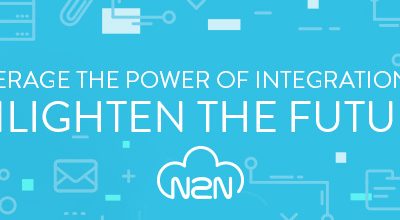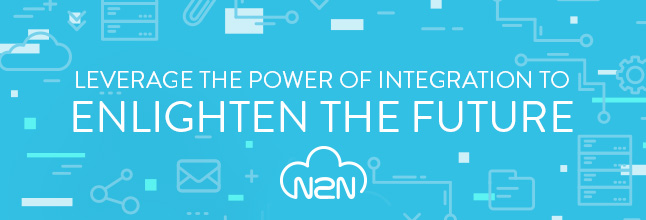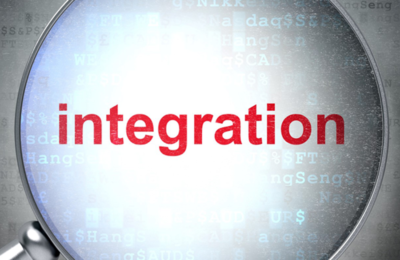EnlightenEd
PayClearly and N2N Services Give Higher Education AP Departments Optimal Efficiency Through Better Payments Processes

PayClearly, an automated payments solution, has partnered with N2N Services to give Higher Education institutions the ability to integrate their ERP systems with accounts payables, streamlining an otherwise time-consuming process.
A strategic partnership with N2N Services, a leading provider of integration systems for Higher Education, allows PayClearly the ability to offer a fully integrated accounts payables payment solution. Universities and colleges use complex ERP systems such as Banner, Colleague, Workday, Oracle and Jenzabar, among others, that contain data necessary to the AP departments daily tasks. This streamlined approach to payables can evolve a department’s processes to allow for a much higher level of efficiency, leading to great savings and revenue-earning rewards.
“Our purpose is to solve payment problems and make the payments process as easy as possible,” stated John Jamieson, Senior Vice President of Sales at PayClearly. “N2N’s simple integration into higher education ERP systems removes multiple, cumbersome steps for controllers, university accountants and all accounts payable staff, allowing for a one step process within one enterprise software. The process becomes truly seamless, leaving time on the table for other important tasks while saving the department money.”
“We are confident that our integration platform, Illuminate, combined with PayClearly’s solution will not only help higher educations’ accounts payables processes but also provide those departments with long-term financial savings,” said Danielle Whitney, N2N Services Vice President of Business Development . “N2Ns integration platform is built to positively affect campuses helping provide higher levels of technology for optimal operational efficiency.”
About PayClearly
PayClearly is a global leader in payment issuing, card processing and other payment solutions that help companies scale more easily. Through the efforts of dedicated sales, development, and support teams in 4 cities across the United States and a network of issuing and acquiring partners operating in over 210 countries, PayClearly provides its clients and partners with streamlined payment solutions that significantly reduce costs and provide valuable business operations improvements.
More EnlightenEd Entries
EnlightenEd
The Tech Revolution And College Libraries

If you haven’t been into a college library recently, you may still have an image in your mind that isn’t quite correct anymore—strict rules on food and drink, massive shelves of books, and the sounds of scribbling pens and turning pages echoing throughout the library. While there are still plenty of books and areas for quiet contemplation, today’s college library is undergoing a transformation that leaves those old images firmly in the past.
What’s happened is that we’ve crossed from information scarcity—with libraries as gatekeepers to vast stores of knowledge—to an age of information overload. But the vast amount of digital information isn’t making libraries and librarians obsolete, it’s simply changing the roles they play on the college campus.
Walk into most college libraries today, and you’ll find well-lit, wide open areas dotted with computers, tables, and energetic students. The floor plans have changed, especially on the first floors. Explore a little further and you’ll find additions of cafes, collaborative spaces, and quiet study rooms equipped with the latest tech.
What you may not see are the hallowed stacks, rising up on every floor. Libraries have begun to adapt not just to the digital age, but to changing study habits and preferences for experimentation and collaboration. What we’ve seen is that libraries on campuses across the nation are doing their best to remain a hub of student activity and creation—even as physical books become less important to students.
And that has inevitably created some tension. This is a massive shift from the way it was done for hundreds of years to a new system that has very nearly turned things on their head. In some instances this push has been descried by librarians as coming too quickly, and with what they see as too great a price when it comes to the library’s role on campus.
But when administrators work with librarians, students, faculty, and IT, the fruits of those collaborations can be quite astonishing.
For instance, Ringling College of Art and Design recently opened their brand new, $18 million Alfred R. Goldstein Library—a library built with technology at the center of its mission, and packed full of collaborative and experiential opportunities for students. That includes a 24-hour computer lab, a digital presentation system, and a state-of-the-art wireless network to fully support all of the tools and tech being used on a daily basis.
And that’s really what the revolution in college libraries is all about—adapting to the changing needs and perceptions of students. As hard as it may be to draw our focus away from traditional library structures, there is a way forward that uses the best of our new technology, without losing the emphasis on learning and personal growth.
The library isn’t the only part of the college campus that’s changing these days, but it certainly is drawing a lot of attention. Different aspects of campus life are adapting to a digital world, and higher ed institutions are now recognizing the need for seamless, secure integration of the many different apps and systems that are currently running on campus, or soon will be. If your school could use a powerful integration platform on campus, then give N2N Services a call today.
More EnlightenEd Entries
EnlightenEd
Our New Year’s Resolution

By Kiran Kodithala, N2N CEO and Founder
I have been supporting educational institutions since 1998 with their administrative student information systems. During the last 18 years, I have supported institutions with ERP implementation, Enterprise Architecture, Application Development and overall Enterprise Management. The first 10 years of my professional career included supporting educational institutions with their Systems Integration needs and I realized the plight of IT staff at these institutions. They are constantly being challenged to integrate the ERP system that was designed in 1980’s with the latest products and solutions. The existing approach of using scripts, batch jobs, and other deprecated technologies was getting increasingly cumbersome and expensive.
I founded N2N in 2010 with a singular mission to make seamless integration affordable for us. To this effect, we designed an integration platform that seamlessly integrates campus infrastructure with the different products on-campus. Over the last 6 years, we have successfully integrated the legacy SIS systems with Mobile Applications, SaaS products, CRM platforms, Content Delivery Systems, and Learning Management platforms.
After successfully launching illuminate last year, I am more confident than ever that my firm mission to solve the integration is now within reach. Illuminate allows customers to build and secure web-services within minutes. Using Illuminate, developers can build web-services using SQL , PLSQL or stored procedures as the Business Object.
Illuminate allows customers to build and secure web-services within minutes. Using Illuminate, developers can build web-services using SQL , PLSQL or stored procedures as the Business Object.
I am most excited about the potential for Illuminate to support the emerging trends in education. New entrepreneurs are actively in the process of creating “uber for learning”, “facebook for learning”, “google for learning” and many other disruptive technologies that have the ability to completely transform the way we learn in the future.
My resolution for the year 2017 is to enable every educational institution with the power of Web Services – Kiran Kodithala, CEO, N2N Integration Inc.
Integration use-cases
2016 has been a great year, we have successfully demonstrated the following use-cases successfully
- The ability to expose student and faculty data to the best mobile platform on the marketplace.
- The ability to expose student data using web-services to a SaaS distance learning platform
- Support the integration of SIS data with a CRM platform built on Sales Force
- Support the integration of SIS data between campuses in a consortia environment
- Support tech product vendor with the ability to connect data from their partner institutions in a turnkey and affordable fashion
N2N’s 2017 resolution
During the year 2017, we will focus all our energies to enable every educational institution with the power of web-services. To this effect, we are committed to partnering with every educational software vendor, every educational institution, and every consortium that supports the mission of affordable and efficient administrative systems on campus.
Together we can ensure the era of enlightenment via simplified and secure data access. I strongly believe that this data access will enable innovation at each campus.
Contact us to let us know how we can help your campus innovate. We are committed to supporting innovation at each educational institution this year.
More EnlightenEd Entries
EnlightenEd
New Tech Creating Opportunities In Higher Education

One of the best things about technology is the different ways it enables change in institutions. But that change isn’t necessarily taken as a good thing by everyone involved. Take, for instance, the massive amounts of technology that have been developed and are now being used in the world of higher education. In some cases, that new tech is being put to use to make life easier for both teachers and students.
Class materials, syllabi, and educational opportunities can all be found online using one of the apps like Blackboard that most higher education institutions have been working with for some time now. Students can communicate with each other, as well as with the professor, quickly and easily while using this technology.
Take the flipped classroom system, where students study course materials on their own, and then spend time solving problems and discussing material in class, rather than being taught the material and engaging in problem solving at home by themselves. This isn’t a new idea by any means, but it’s easier to accomplish with the help of online material and resources.
Another revolution that has begun with the help of new technology is the rise of online classes. For students enrolled in college, many classes are offered online, and interactions with the students and professors are all done online, or with periodic meetings.
In turn, that has led to MOOCs—Massive Open Online Classes—which anyone with an internet connection has access to. Some students can get credit for the courses, but most offer a certification of completion, rather than actual college credit.
The pushback to all of this has come from those who don’t see a great benefit coming from the digitization of classes and coursework. In many cases, they do have a valid point. Some people, students included, feel that they work better with real interactions with their professor in a classroom environment, rather than an entirely virtual classroom.
But no one is suggesting going entirely virtual, and ignoring the benefits that these kinds of innovations bring can be dangerous for a university’s bottom line, as well as their reputation. What we need to see happen is for faculty to be encouraged to use new technology, and given some time to experiment and find what works best for them and their students.
That means administrators are going to have to be the ones who encourage organizational change by investing in technology and rewarding faculty who take on the challenges of teaching with it. The road to better education through innovation won’t always be easy, but it will be worthwhile to pursue.
More higher education institutions are developing and nurturing these kinds of programs because they see where higher education is headed. If you want your school to stay on the cutting edge, then adopting new and useful educational tools is only the beginning. Give us a call today if you’d like to hear more about how N2N can bring your campus into the future.
More EnlightenEd Entries
EnlightenEd
How Transitioning IT Will Change Hiring Practices

Take a look at a few of the findings from the EDUCAUSE Center For Analysis and Research’s report on IT delivery in higher education.
- Nearly half of institutions have outsourced at least one non-cloud service.
- More than 80% of institutions have moved at least one service to the cloud.
- About one-third of institutions share services.
This shouldn’t come as any surprise to those who have been paying attention to the revolution going on in IT. Simply put, the way IT conducts business is changing. In fact, the numbers above have likely increased since they were published, and that trend is set to continue into the future.
Higher education institutions are realizing the potential of the cloud for less expensive services and less physical space taken up for those services. We’ve talked about this shift before—very soon there will be a stronger concentration on managing the vendors, services, and outsourced materials than there will be on managing infrastructure and technical resources.
So the distribution of IT is clearly changing, and that means that there are going to be changes in the types of skills that IT departments around the country will require. This doesn’t mean that technical skills will suddenly become obsolete, but we most likely will see a shift in the skills that make a successful IT employee.
Communication Skills
Soft skills like communication are already important, but as IT begins working less with hardware and more with vendors and contracts, these soft skills are going to become even more crucial.
Legal Proficiency
More contracts and vendors, and all the new regulatory and security requirements are going to drive a need for CIOs to have legal experts on hand.
Service Management Knowledge
Knowledge of service management frameworks and tools will be crucial to making service delivery and management more efficient.
Service Management Specialists
As this new focus on service management continues to increase, we’ll be seeing positions popping up for service management specialists and vendor management.
As you can see, these changes are all related to the new focus we’re seeing in higher education IT. Notice how many of these positions relate to the management of vendors and services. That’s because we’re seeing an increasing number of apps and services being offered to colleges and universities each year. As they move to manage these services and integrate them into their current apps and legacy systems, it will become crucial that they have the ability to do this securely and in compliance with federal regulations.
At N2N, we developed our integration platform specifically with these integration challenges in mind. Our focus on higher education allows us to tailor individual solutions for each of our partners, scaling our services to meet their needs.
The changes in IT distribution and management are only going to accelerate in coming years, so it’s important that you have a plan in place to deal with these changes. Give us a call if you’d like to hear more about our integration solutions for your campus.
More EnlightenEd Entries













